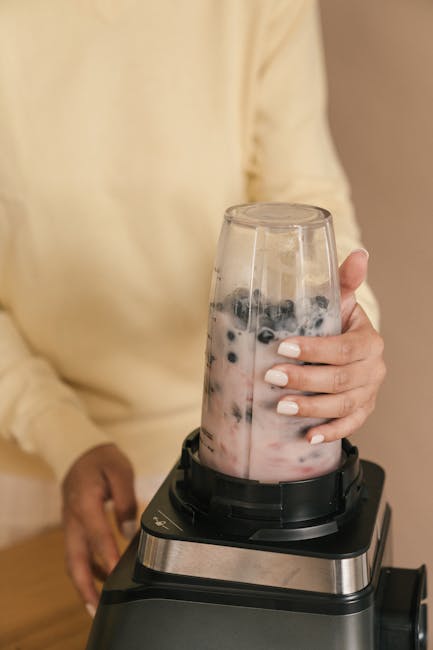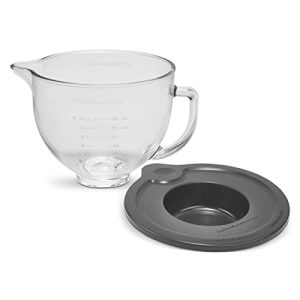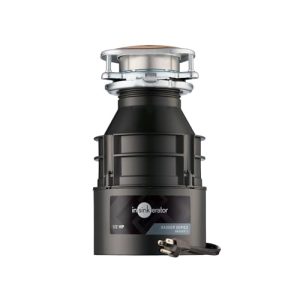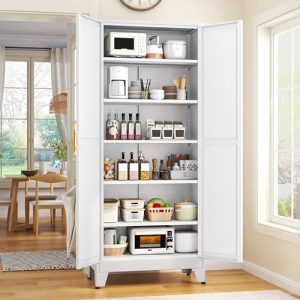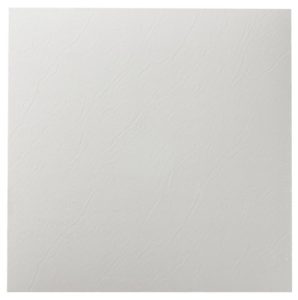Have you ever wondered what a blender really is and how it can change the way you prepare food in your kitchen? A blender is more than just a gadget—it’s your secret weapon for creating quick, delicious meals and drinks.
Whether you want to whip up a healthy smoothie, blend soup to perfection, or crush ice for a refreshing drink, understanding what a blender does can make your cooking faster and easier. Keep reading to discover how this simple tool can transform your kitchen experience and inspire your next culinary creation.
Blender Basics
A kitchen blender is a device that mixes, chops, and purees food quickly. It helps make smoothies, soups, and sauces with ease. Small blades inside the jar do the hard work fast.
Blender Basics A blender is a versatile kitchen tool. It mixes, purées, or emulsifies food. It’s essential for smoothies, soups, and sauces. Understanding its basics helps you use it effectively. Let’s explore the types, components, and workings of blenders.Types Of Blenders
Different types of blenders serve various needs. Here are common types:- Countertop Blenders: Great for large batches and powerful blending.
- Immersion Blenders: Handy for quick tasks and easy to store.
- Personal Blenders: Ideal for single servings and on-the-go use.
- High-Performance Blenders: Suitable for tough ingredients and long-lasting use.
Key Components
Blenders have several important parts. Knowing them helps in proper use:- Jar: Holds the ingredients. Made of glass or plastic.
- Blades: Sharp and durable, they chop and blend.
- Motor: Provides power for blending. Stronger motors handle tougher tasks.
- Control Panel: Adjusts speed and settings. Offers versatility in blending.
How Blenders Work
Blenders mix ingredients using powerful motors. The motor spins the blades rapidly. This creates a vortex that pulls ingredients down. The blades chop and blend the contents. Speed settings control how fine or coarse the blend is. A good understanding of these basics enhances your blending experience.Common Kitchen Uses
The blender is one of the most versatile tools in your kitchen. It can save you time and effort, making meal prep smoother and more enjoyable. Let’s look at some common ways you can use your blender every day.
Making Smoothies And Shakes
Blenders make it easy to whip up delicious smoothies and shakes in seconds. Just add your favorite fruits, some yogurt or milk, and a handful of ice cubes. You get a creamy, well-blended drink without any chunks.
Have you ever tried adding spinach or kale to your smoothies? The blender blends these leafy greens so well that you won’t even taste them. This is a great way to sneak in extra nutrients without changing the flavor much.
Pureeing Soups And Sauces
If you enjoy homemade soups or sauces, a blender is your best friend. It turns chunky ingredients into smooth, velvety textures quickly. This can transform a simple vegetable soup into a restaurant-quality dish.
Don’t limit yourself to just blending after cooking. You can also blend raw ingredients before cooking to create fresh, flavorful sauces. Have you ever made a quick pesto or tomato sauce in your blender? It’s surprisingly simple and saves a lot of time.
Chopping And Grinding
Your blender can also chop and grind ingredients like nuts, herbs, and even coffee beans. This means fewer gadgets crowding your kitchen counter. It’s perfect when you need finely chopped ingredients but don’t want to pull out a food processor.
Try pulsing the blender for chopping to avoid over-processing. This gives you more control over the texture. Have you noticed how much faster this is compared to chopping by hand? It’s a real time saver during busy meal prep days.
Creative Blender Recipes
Using a blender opens up a world of creative possibilities in your kitchen. It’s not just for smoothies or soups—you can craft unique, homemade recipes that elevate everyday meals. Whether you want to whip up a quick snack or impress guests with fresh flavors, your blender is a powerful tool that makes cooking faster and more fun.
Homemade Nut Butters
Have you ever thought about making your own nut butter? It’s surprisingly simple with a blender. Just toss in roasted nuts like almonds, peanuts, or cashews, and blend until smooth.
You control the texture and ingredients, avoiding added sugars or preservatives found in store-bought versions. Try adding a pinch of salt, a drizzle of honey, or a sprinkle of cinnamon to customize your spread. It’s perfect for toast, smoothies, or even baking.
Fresh Salad Dressings
Salad dressings don’t have to come from a bottle. Your blender can mix up fresh, vibrant dressings in seconds. Combine olive oil, vinegar, mustard, herbs, and a bit of garlic for a classic vinaigrette.
Want something creamy? Blend avocado or yogurt with lemon juice and seasonings for a smooth dressing. The blender emulsifies the ingredients perfectly, giving your salads a fresh, homemade taste that’s hard to beat.
Frozen Desserts
Frozen desserts can be healthy and easy to make at home. Use your blender to create creamy ice creams or sorbets using frozen fruits and a splash of milk or juice.
Banana-based “nice cream” is a favorite—just freeze ripe bananas, then blend until smooth. You can add cocoa powder, berries, or nuts for variety. It’s a great way to satisfy your sweet tooth without the guilt.
Health Benefits
Using a blender in your kitchen offers more than just convenience—it can actively boost your health. Blending helps you enjoy whole foods in new ways, preserving their nutrients and making it easier to stick to nutritious eating habits. Have you ever thought about how a simple kitchen tool could transform your daily wellness?
Nutrient Retention
Blending keeps the fiber and essential vitamins intact, unlike juicing where pulp and skin are discarded. This means you get the full benefits of fruits and vegetables, including antioxidants and minerals that support your immune system.
For instance, blending spinach into a smoothie preserves its vitamin C and folate, which are sensitive to heat and air. Drinking a blended green smoothie can be more nutritious than eating cooked spinach because the nutrients stay fresh and active.
Meal Prep Efficiency
Blenders speed up meal preparation, making it easier to eat healthy even on busy days. You can whip up soups, sauces, and smoothies in minutes, which helps you avoid processed snacks that often sneak into hectic schedules.
Imagine saving 10 minutes each morning by quickly blending a protein-packed smoothie instead of skipping breakfast. This small change can improve your energy levels and focus throughout the day.
Supporting Special Diets
If you follow a vegan, gluten-free, or low-carb diet, a blender is your best friend. It helps you create nutrient-rich meals that fit your dietary needs without sacrificing taste or variety.
For example, blending nuts and seeds into a creamy sauce can replace dairy in recipes, while pureed vegetables add texture and nutrients to gluten-free dishes. How could a blender make sticking to your diet easier and more enjoyable?
Choosing The Right Blender
Choosing the right blender for your kitchen is more than just picking a stylish appliance. It’s about finding a tool that fits your cooking habits, space, and budget. The right blender makes your food prep easier and more enjoyable, helping you create everything from smoothies to soups with ease.
Power And Speed Options
Think about what you’ll blend most often. Do you need a blender that can crush ice or handle tough vegetables? If yes, look for models with higher wattage, typically above 500 watts.
Speed settings matter too. Multiple speeds and pulse functions give you more control over texture. A simple smoothie needs less power than a thick nut butter, so variable speeds let you adjust as needed.
Capacity And Size
How much do you usually prepare at once? Small families might find a 32-ounce blender jar perfect, while larger households may need 64 ounces or more.
Also, consider your kitchen space. A large blender can be powerful but bulky. If your counter is tight, a compact model might serve you better without sacrificing essential features.
Budget Considerations
Blenders come in a wide price range. Setting a clear budget helps narrow down your choices.
Remember, the most expensive blender isn’t always the best for your needs. Sometimes mid-range models offer the best balance of power, durability, and features without breaking the bank.
Ask yourself: How often will you use the blender? Investing more makes sense if it’s a daily tool, but occasional use might call for a simpler, affordable option.
Maintenance Tips
Proper maintenance keeps your kitchen blender working well. It helps avoid damage and saves money. Simple care routines can improve performance and safety. Follow these tips to maintain your blender easily.
Cleaning Techniques
Clean the blender after every use to stop build-up. Rinse the jar with warm water immediately. Use a soft brush or sponge with mild soap. Avoid harsh scrubbers that can scratch the surface.
For deep cleaning, blend warm water and soap for 30 seconds. Rinse thoroughly and dry all parts completely. Remove and clean the blade carefully to avoid injury. Regular cleaning prevents odors and stains.
Troubleshooting Common Issues
Check the power cord and plug if the blender does not start. Make sure the jar is locked properly on the base. Overheating can cause the motor to stop. Let it cool down for 15-20 minutes before using again.
Noise or vibration might mean loose parts or damaged blades. Tighten screws and replace broken parts as needed. If the blender leaks, inspect the gasket and seals. Replace damaged seals to avoid spills.
Extending Blender Lifespan
Use the blender only for recommended tasks. Avoid overfilling to reduce motor stress. Cut hard ingredients into smaller pieces before blending. Do not run the blender continuously for long periods.
Store the blender in a dry place away from heat. Regularly check for wear and tear. Replace worn blades and parts promptly. Proper care extends the life of your blender and keeps it safe to use.
Frequently Asked Questions
What Is A Blender Used For In The Kitchen?
A blender is used to mix, puree, or emulsify food and liquids. It helps make smoothies, soups, sauces, and more.
How Does A Kitchen Blender Work?
A kitchen blender uses rotating blades powered by a motor to chop and blend ingredients smoothly.
Can A Blender Replace A Food Processor?
Blenders can handle liquids and soft foods well but are less efficient for chopping or slicing solid foods compared to processors.
What Types Of Foods Can You Blend?
You can blend fruits, vegetables, nuts, ice, and liquids to create smoothies, soups, dressings, and sauces.
Conclusion
A blender in the kitchen makes cooking easier and faster. It helps mix, chop, and blend many ingredients. You can create smoothies, soups, sauces, and more with it. Small or large, blenders come in different types for all needs. Using a blender saves time and effort in food preparation.
It is a useful tool for any home cook. Simple, quick, and helpful—that’s what a blender brings to your kitchen.

Sophie Hartwell is the founder of KitchenQuik.com, where she shares kitchen tips, smart cooking hacks, and the best product picks to make everyday cooking easier and more enjoyable.
